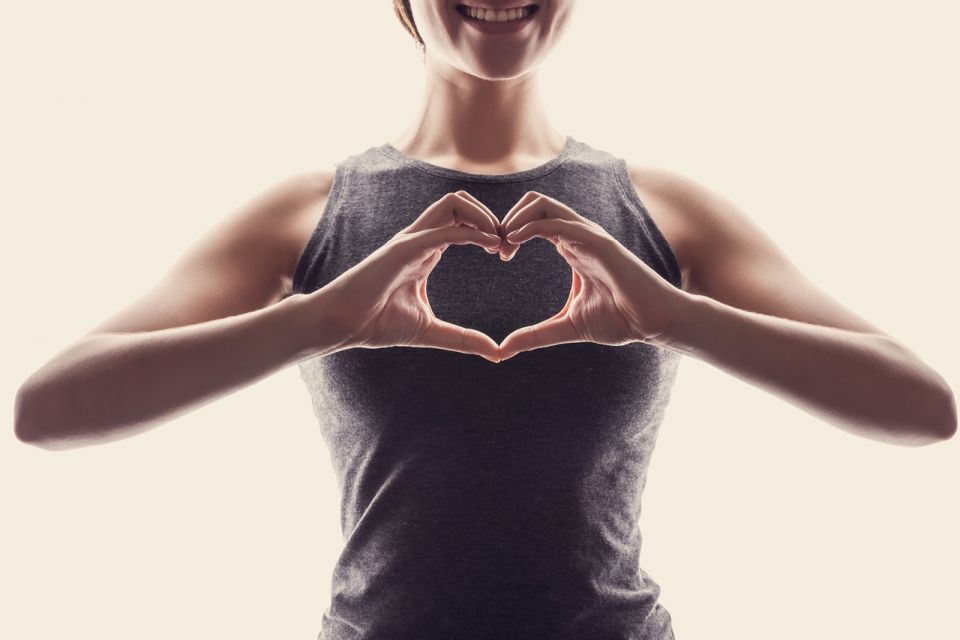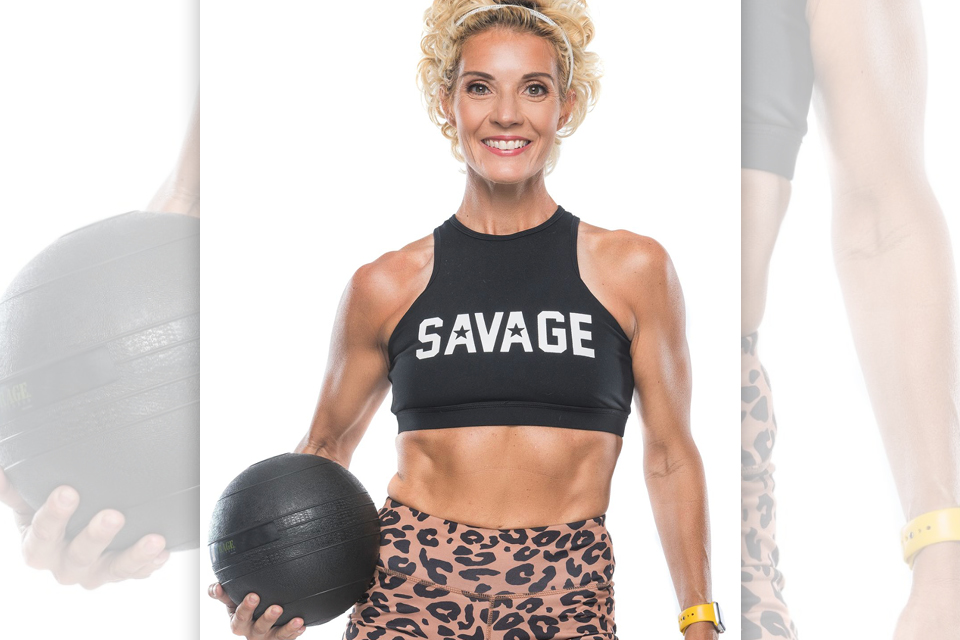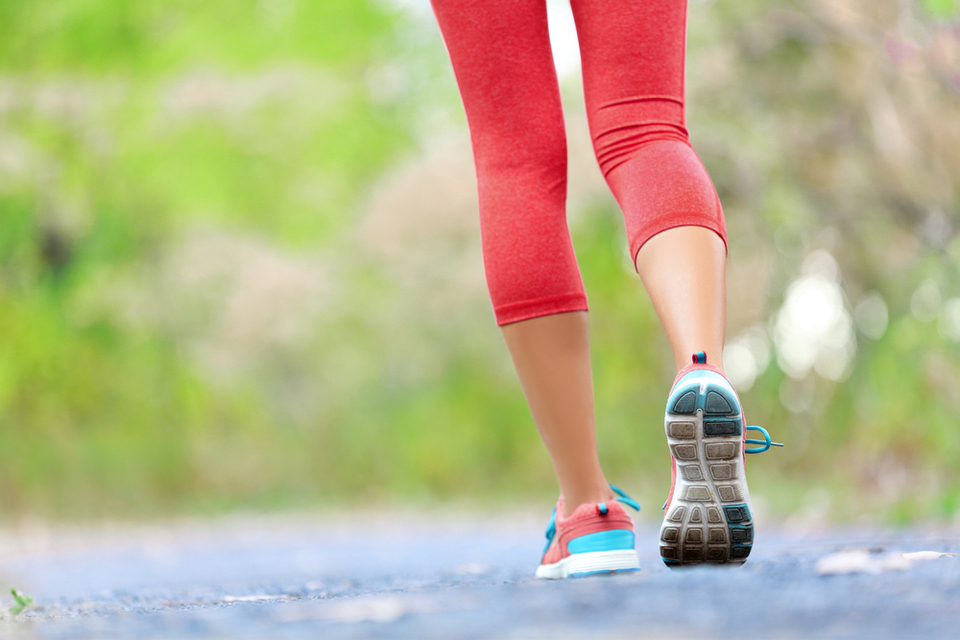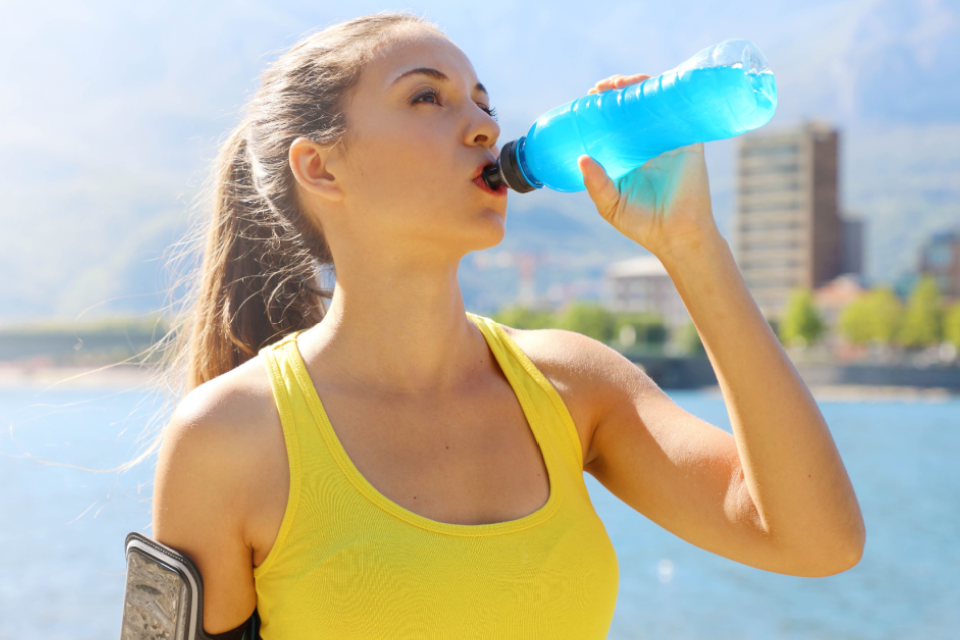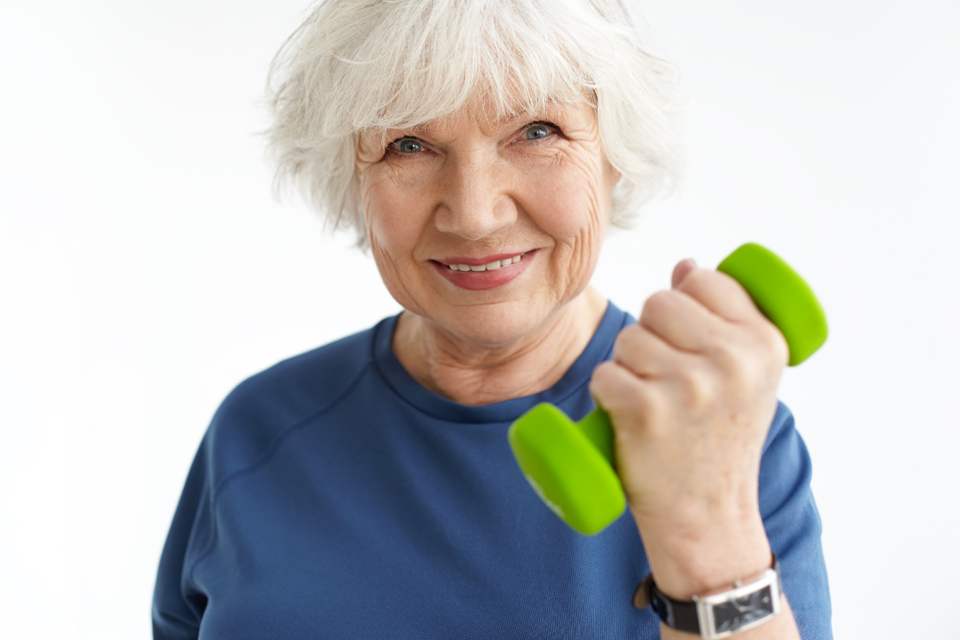Are the snowfall and cold keeping you stuck indoors? Having lived in northern climates, I remember the days of feeling trapped like a school kid with spring fever. Every fiber of my being wanted to go to the gym and get a good sweat session in, but the safety voice inside my head said, “Stay off the roads.” Then I’d look around at my tiny little space and think, “There’s not enough room; I don’t have workout equipment . . .” the list of obstacles kept growing.
There’s no need to suspend your fitness in such obstacles, though! In honor of heart health month (and the continued cold, snowy, icy weather), here are three indoor home workouts to jump-start your cardiovascular health (and perhaps mental well-being too):
Body-Weight Tabata
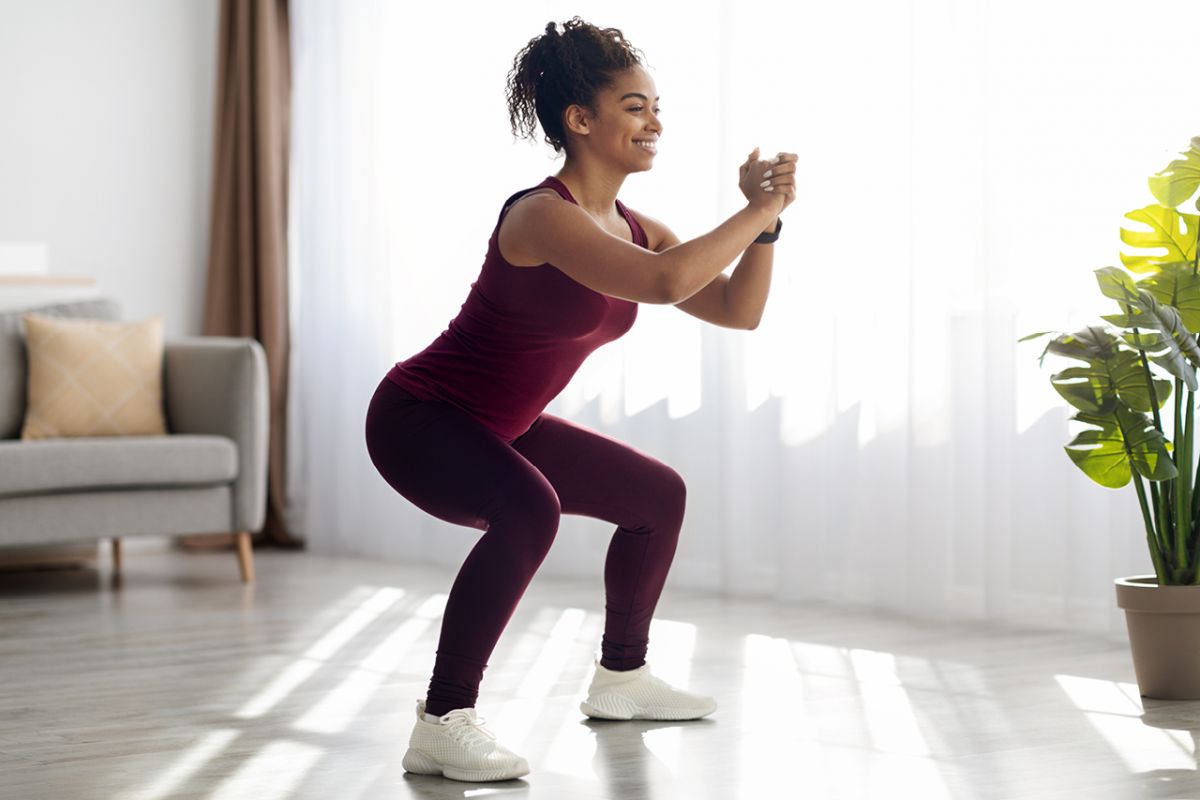
Tabata workouts are also known as 20-10-8 workouts, meaning 20 seconds of all-out work, then 10 seconds of rest, performed for eight rounds. If you select a single exercise, Tabata format provides an effective workout in only four minutes, but adding exercises can extend the workout to promote higher levels of heart health.
Tabata workouts are a type of HIIT (high-intensity interval training) workout with a specific structure geared toward improving high-intensity anaerobic cardiovascular function and aerobic base and muscular endurance. The name comes from Dr. Izumi Tabata, a former National Institute of Health researcher who studied the cardiovascular performance benefits of these workouts.
Here are some no-equipment-required exercise ideas to help you get started:
- Body weight squats
- Push-ups
- Burpees
- Split squats
- Plank shoulder taps
- Mountain climbers
- Side lunges
- Side plank leg raises
- Elbow in push-ups
Perform each exercise “all out” for 20 seconds, then rest for 10 seconds. Repeat for eight rounds. Take a one-minute break, then move on to the next exercise. Feel free to scale exercises to your abilities, add load, or substitute your favorite moves.
When figuring out how many exercises you’d like to include, allot 5 minutes for every exercise you want on your list (eight rounds = four minutes plus a one-minute rest before moving to the next one).
If the idea of doing a single exercise for eight rounds seems overwhelming or boring, feel free to do one round of each exercise (20 seconds on, 10 seconds off), then rest for 1 minute after you complete the first round of all exercises. Aim to repeat the list for eight rounds.
Vinyasa Yoga
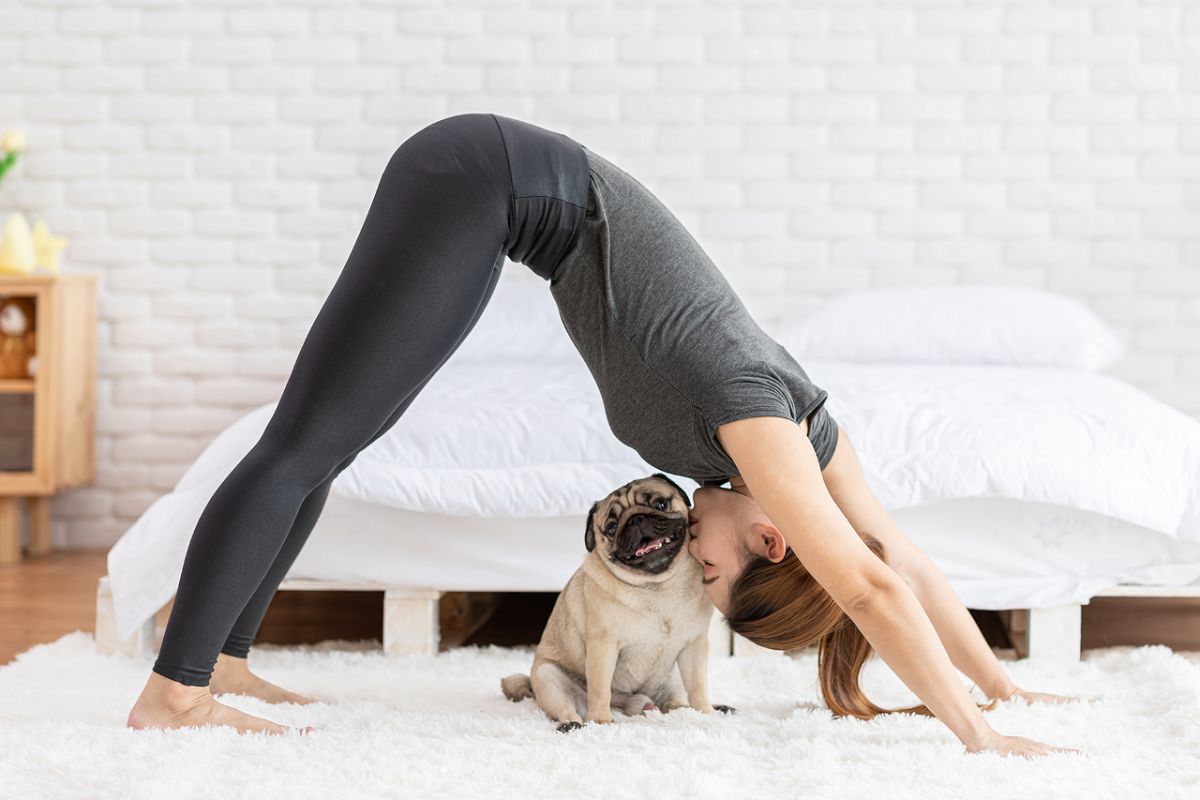
When you think about yoga, what comes to mind? When I ask this question of groups of adults, teens, and kids, the first answers are often “stretching,” “meditation/mindfulness,” or “stress relief.” All of these activities are part of yoga. Interestingly, I’ve never had anyone answer with anything suggesting cardiovascular fitness. Yoga, however, can play a major role in building a cardiovascular fitness base, and helping to normalize heart rate variability (a measure of your body’s overall stress).
In a 2021 study by Butulis et al., well-conditioned athletes participated in a six-week Vinyasa flow yoga program two days/week for one hour each session. Another age and gender-matched group participated in Tabata training two days/week for one hour each session. Interestingly, the Vinyasa yoga group showed greater improvements in performance on cardiovascular tests during their 6-week training period.
If you’d like to build your aerobic base, work on flexibility, and manage stress, Vinyasa yoga may be a great fit. You can get started at home without any equipment. You don’t even need a mat or shoes! Vinyasa yoga is a flow yoga, meaning you should keep moving from pose to pose, as opposed to holding in any position. The rate of movement is up to you. The faster the movement, the higher the heart rate, and the more cardiovascular work you create.
Here are three sequences to get started. Allow 5-10 minutes for each sequence, depending on how fast you’d like to move. Each sequence is a progression from the next. Feel free to select one or more, scale to your abilities, and add/subtract movements to your liking.
Sequence 1: Begin on all 4s. Perform each exercise 10 times.
- Cat camel: Alternate rounding and arching your back
- Bird dog, alternating sides: Alternate raising your opposite arm and leg
- Downward dog: Raise your hips to downward dog, then lower back to all 4s
Sequence 2: Begin in downward dog. Perform each exercise 10 times.
- Low lunge: Step forward to place one foot between your hands in a lunge position; return to downward dog; continue, alternating sides
- Downward dog leg raise: From the downward dog, alternate raising one leg up to the ceiling, then returning it to downward dog on two feet; continue, alternating sides
- Sumo squat hops: From the downward dog, hop the feet forward to a sumo squat, then hop back to a plank or downward dog; continue repeating the hops
Sequence 3: Begin in the sumo squat from the end of sequence 2. Perform each exercise 10 times.
- Curtsey lunge: Alternate legs to perform a curtsey lunge
- Chaturanga: Place your feet close together; squat to place your hands on the floor on either side of your feet; jump or step your feet back to a high plank; perform the lowering phase of an elbows-in push-up; raise your chest to an upward dog; raise your hips to a downward dog; return to the plank position to continue repeating the sequence
- High boat-low boat: Sit on your buttocks. Raise your feet/shins up as if you were about to perform a Russian twist; lower the upper body and legs simultaneously into a hollow hold position; return to the seated position. Continue alternating between the hollow and seated position
Closing Shavasana: Once you have completed the workout, take a moment to lie flat on your back and breathe. Try to breathe in through your nose and out through your mouth. Aim for 10 breaths, taking at least 5-10 seconds on each exhale to help de-stress and practice mindfulness. Stress management plays a large role in heart health too.
Dance Off

Are you a creative person who prefers less structure? This workout is perfect for creative souls with or without a dance background. No dance experience is required! Have kids? Even better! Kids, teens, and others make this workout more fun for everyone! (I’ve even done Zoom dance jams with friends, co-workers, and even grandparents. Why not spread health and smiles to more people?) Besides a great cardiovascular workout, you will feel re-energized and likely have some great laughs. Laughing changes hormone and brain neurotransmitter balance in a way that promotes overall well-being, stress relief, and heart health too!
Without dance experience, it can be hard to know where to begin. No worries. Follow these steps to find inspiration:
- Music on: Put on any music you like to listen to when you work out. Even better, try a random music mix with multiple genres and tempos.
- Just start moving. Any movement counts. It can be a workout movement, a dance movement, or swinging your arms or a leg.
- Add themes: Play with the following themes one-song at a time to expand your creativity and range of heart health-promoting cardiovascular intensities:
- Slow-fast: Do a movement slowly for 16-32 counts, then try to double-time it for 16-32 counts. Repeat for the duration of the song, or until you want to try a different theme.
- High-low: Do a movement on your feet for 16-32 counts, then do something that requires squatting, lunging, crouching, crawling, rolling or anything that requires being close to the ground for 16-32 counts. Repeat for the duration of the song, or until you want to try a different theme.
- Sharp-smooth: Perform movements with sharp accents for 16-32 counts, then perform movements that are slow and flowy for 16-32 counts. Repeat for the duration of the song, or until you want to try a different theme.
- Big-small: Perform large total body movements for 16-32 counts, then perform tiny isolated movements like only moving one elbow, or only moving one ankle. Repeat for the duration of the song, or until you want to try a different theme.
- Right-left: Perform movement driven by the right side of your body for 16-32 counts, then perform the same movement driven by your left side body for 16-32 counts. Repeat for the duration of the song, or until you want to try a different theme.
Tips for 2 or more people (in person, or virtually):
-
Mirror drill: Select a leader, everyone else should try to copy their movement. Rotate leaders as you change themes/songs.
-
Animal house: Add a new element to each theme by having each person silently pick an animal. Try to act like that animal as you explore the movement theme. For example, “act like a giraffe” while performing the sharp-smooth theme. At the end of the round, see if you can guess what animal each person had chosen. The person who guesses correctly gets to pick the next tune or theme to explore!
Next steps
This article isn’t for reading; it is for doing! Share it with others who are snow and ice-bound, then get up, pick one of these ideas, and start improving your own heart health right now.
About the Author: Dr. Meredith Butulis, creator of the ISSA Fitness Comeback Coach Certification (online), is a Sports Medicine Physical Therapist, NSCA Certified Strength and Conditioning Coach, ACSM Certified Exercise Physiologist, NASM Certified Personal Trainer, and Precision Nutrition Certified Nutrition Coach in practice since 2002. She consistently walks the talk as a fitness, physique, and OCR world-level competitor and lifestyle transformer since 2006, celebrating many wins along the way. Want more total fitness lifestyle inspiration and interaction? Follow Dr. Meredith on Instagram @Dr.MeredithButulis or join the free “Fitness Focus Fuel” Facebook Group.
Reference:
Butulis MN, Fedor BJ, McGaver RS, Giveans MR. Is Matching Exercise Intensity to Heart Rate Variability a Key to Effective Conditioning for Dancers? A Prospective Randomized Controlled Trial. J Dance Med Sci. 2021 Jun 15;25(2):96-104. doi: 10.12678/1089-313X.061521d. Epub 2021 Mar 29. PMID: 33781372.

